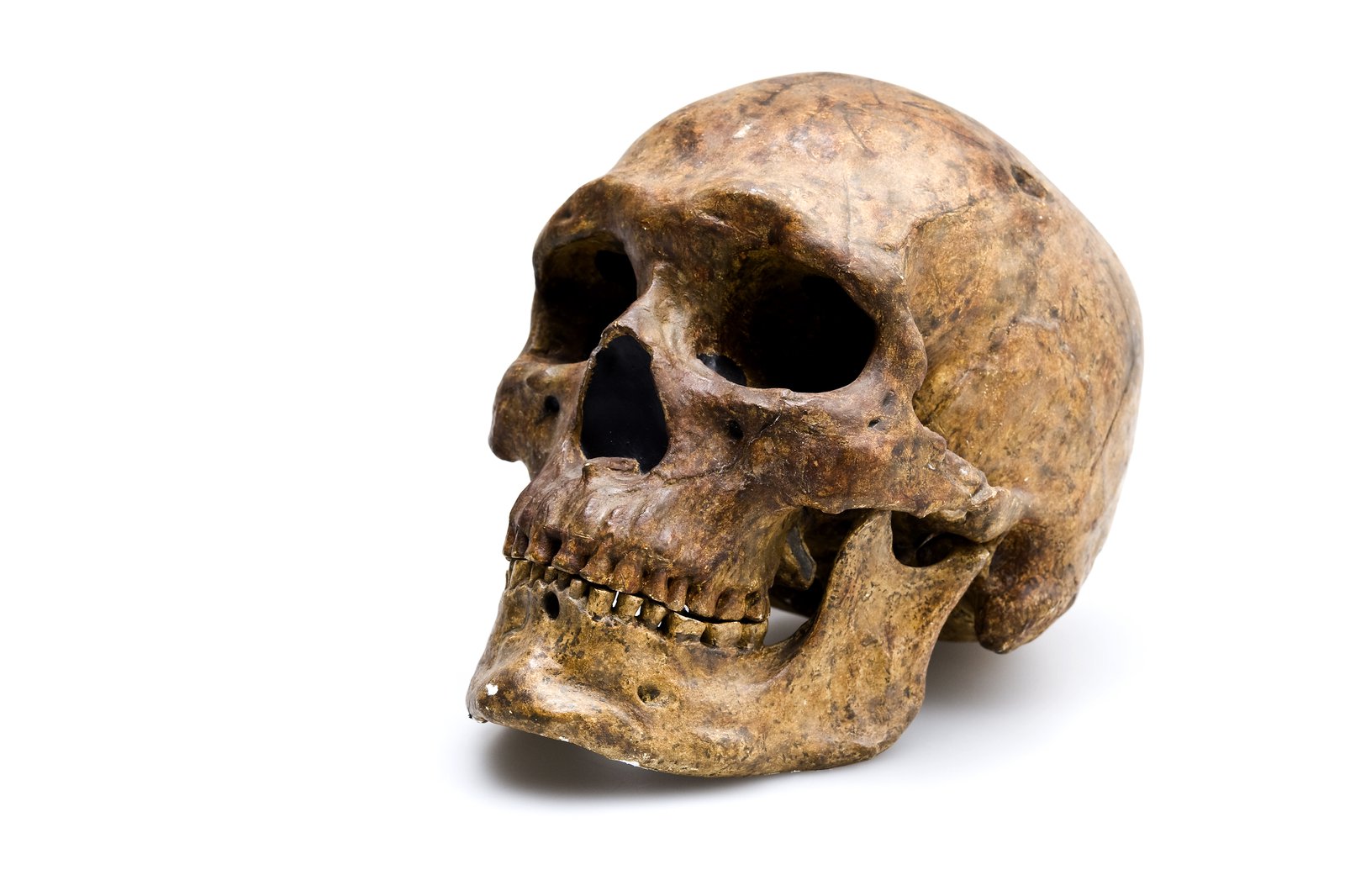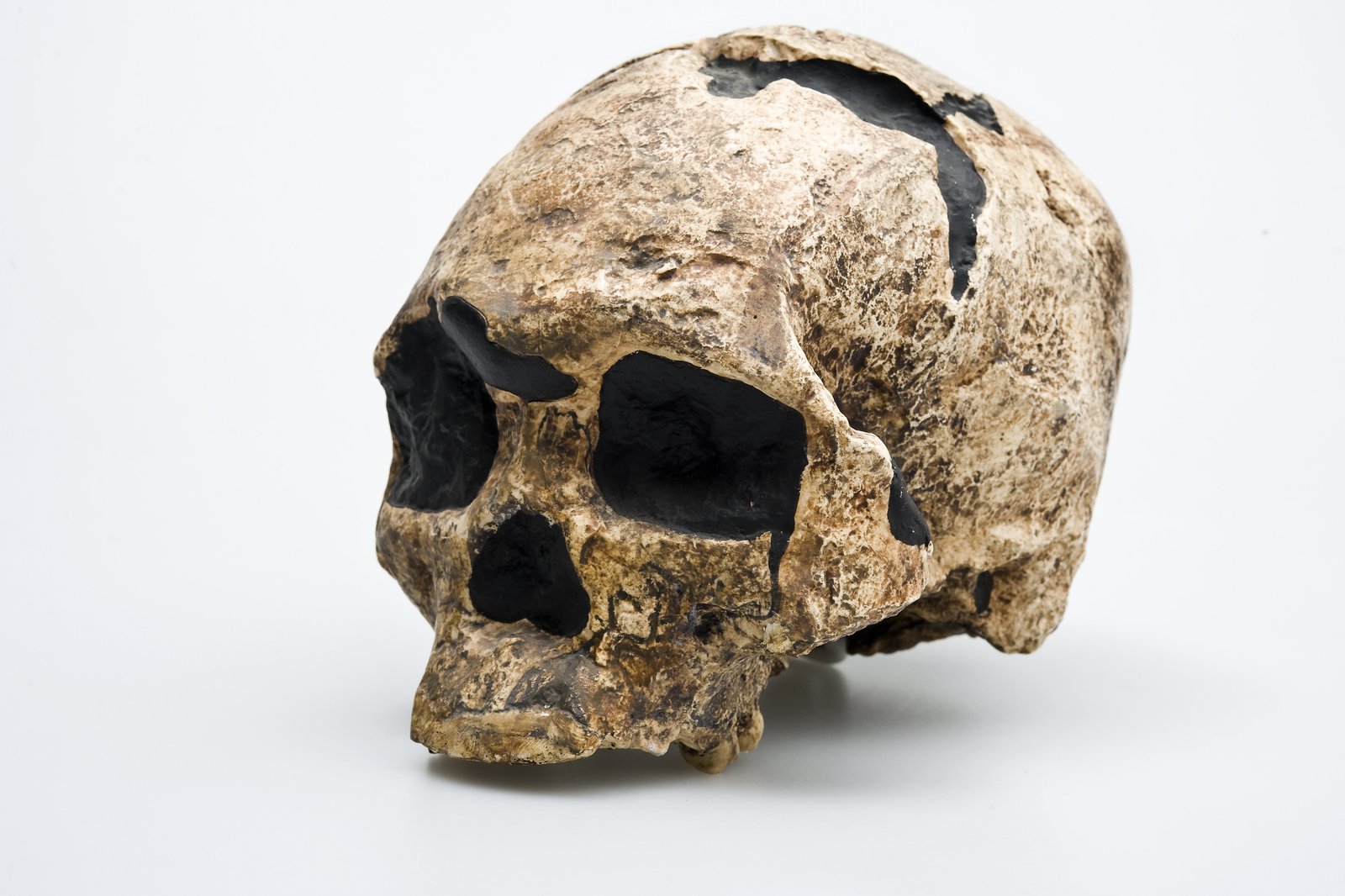The origins of modern Southeast Asians are a subject of debate, with two contrasting theories. The first theory, based on the 'Out of Africa' model, suggests that modern humans migrated from Africa to Asia approximately 50-70,000 years ago. The skulls discovered at the Upper Cave in Zhoukoudian, China, which resemble contemporary Africans and Europeans more closely than modern Asians, support this theory.
However, some scientists believe that Southeast Asians are direct descendants of Homo erectus, which migrated from Africa to Asia approximately 1.8 million years ago. The physical features of modern Asians can be traced back to specimens such as Dali and Peking Man. The Southeast Asian fossil record between 100,000 and 25,000 years ago is scarce, with few securely dated archaeological sites or fossils.

An exception is a modern human skeleton discovered in Tianyuan Cave, Zhoukoudian, China, dating back to 42,000 to 38,500 years ago. The specimen has archaic characteristics in the teeth and hand bones, indicating that the spread of modern humans from Africa may have involved more than one migration event.
Modern Southeast Asian features, such as an upward orientation of the cheekbones, broad face with limited projection, flattened nasal bones and a broad nose, and shovel-shaped incisors, were not present in early humans in Asia.

The earliest evidence of these features in the fossil record is found in skulls from Baoji and Huaxian in China, which are approximately 7,000 years old. Genetic studies indicate that a significant population reduction occurred in Asia around 10,000 years ago, followed by a rapid expansion of a population where Asian features were dominant, linked with the spread of agriculture.
Early specimens lacking modern Southeast features include the Liujiang skull from the Guangxi province in South China, the Zhoukoudian skull from Upper Cave 101, and the Minatogawa 1 skull from Japan, all dating back to 25,000 to 10,000 years ago, and the latter sharing more traits with the Liujiang skull than with Neolithic and modern Asians.
The passage describes the Indonesian fossil record and its relation to the evolution of modern Indonesians and Indigenous Australians. It notes that attempts to prove evolutionary continuity through the fossil record have been unsuccessful due to its fragmentary and limited nature, with many fossils having been found without recording their exact location.
The anatomical features used to demonstrate an evolutionary sequence are also disputed. The passage mentions specific fossils, including the Wadjak skull, which was originally thought to be 50,000 years old but is now believed to be less than 20,000 years old, and the Solo Man skullcap, which shares similarities with earlier Homo erectus specimens and has uncertain age and location. The passage also mentions Java Man, a Homo erectus skull cap dated to 500,000 years old.
Source:
Australian Museum. "The First Modern Humans in Southeast Asia." Australian Museum, 6 Mar. 2020, australian.museum/learn/science/human-evolution/the-first-modern-humans-in-southeast-asia/#gallery-218-2.



















